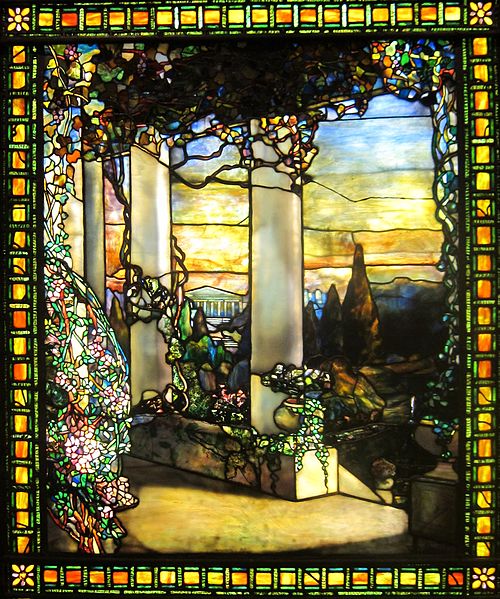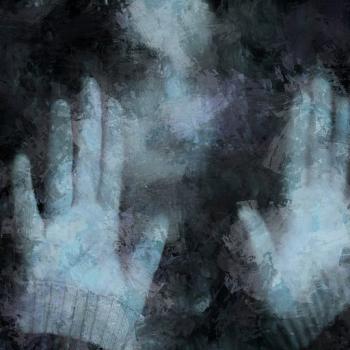 Star Foster over on the Pantheon blog got me thinking with her two recent articles on the feasibility of Pagan temples in the modern age. ( first article : second article ). Doing something like this would be a considerable undertaking by any group of Pagans in the community. It would also take a transformation of the financial mentality of Pagan community as eloquently pointed out by John Beckett over at Under the Oaks. The idea behind building a temple in the Southeast region is one I am a enthusiastic supporter of. That is not the point of the article though.
Star Foster over on the Pantheon blog got me thinking with her two recent articles on the feasibility of Pagan temples in the modern age. ( first article : second article ). Doing something like this would be a considerable undertaking by any group of Pagans in the community. It would also take a transformation of the financial mentality of Pagan community as eloquently pointed out by John Beckett over at Under the Oaks. The idea behind building a temple in the Southeast region is one I am a enthusiastic supporter of. That is not the point of the article though.
The idea of a Pagan temple (whether built or converted) makes me wonder about the accomplishments of modern Paganism and its relationship to the future. Pagans around the world are blessed with a wealth of sacred sites and objects, the legacy of people’s mystical traditions left behind. There are such things as the Mayan Calendar, Stone Henge, the Great pyramids and the Sphinx, or the Bighorn Medicine Wheel.But what kind of legacy are we leaving for the generations of Pagans to come? I can think of a great many things we have gained such as religious freedoms, a level of social acceptance, knowledge/lore, and legal standing (all things that I am extremely grateful for). There are also currently projects that I am aware of such as the New Alexandrian Library that are attempting to build a lasting heritage for the Pagan community. But what have we as modern Pagans built? Nothing comes to mind (or google search). This makes me think – Why haven’t we? Do we need to? The comments on Star’s article might be a good indication as to why. They make several good points such as:
- Money
- Time
- Effort
- Diversity
I think that these are all excellent reasons why. However, deep in my heart and mind I feel that a different reason is the answer. I think the answer is very simple. I think it might have to do with the Self and by extension selfishness . Modern Paganism is a religion that teaches and strives to guide us towards enlightenment. We spend a great deal of time looking at ourselves in relation to our personal journey along the path and the many trials and tribulations we encounter upon it. It takes a great amount of effort for us to detach ourselves from our personal wants and to focus on the needs of the community. I will be the first to admit that I can be guilty of this. I think that humanity as a whole does it on a subconscious level (Maslow’s_hierarchy_of_needs). I also think that Pagans may do it more than most (We are a minority religion and as such have faced a lot of hardships). Since we focus on the self I think we might also be limiting ourselves in our long-term prospects from a magical perspective.
As a Pagan who practices the Wheel of the Year and the cyclical nature of the Craft, I think I might have unintentionally limited myself. I tend to focus on the current Wheel as I walk it – the path that is before me and those I share it with. Because of that focus have I limited myself and the magic I work to fit within the confines of the Wheel of the Year? I think so, and I think that is a pretty huge epiphany. So I thought to myself “What is the longest active magic I have done and how do I define that?” For me three distinct answers came to mind.
- A Year: I wrote and performed a set of Sabbats that encompassed all 8 sabbats.
- A Month: I spent time each day preparing for my initiations, but due to modern life this wasn’t a month uninterrupted.
- A week: When my mother and father passed I spent a week of constant effort to maintain an altar going magically. I devoted most of these days to tending the altar and even sleeping nearby. This is the longest I have spent in my focus on nothing but magical practices (aside from basic needs).
This weekend at Ostara I will be undertaking something magical that has the potential to last for 80 years if not longer. That kind of thinking amazes me. This is the effort of around 10 people. I wonder what we could do if we focused less on the Self and more on its polarity of the Community. I believe that the Pagan religion will begin to experience this as it continues to mature. I can’t help but to wonder what the people who did the Mayan Calendar or Stone Henge thought about when they set out to bring about their creations. I am reminded of this quote by Theodore Roosevelt.
“It is not the critic who counts: not the man who points out how the strong man stumbles or where the doer of deeds could have done better. The credit belongs to the man who is actually in the arena, whose face is marred by dust and sweat and blood, who strives valiantly, who errs and comes up short again and again, because there is no effort without error or shortcoming, but who knows the great enthusiasms, the great devotions, who spends himself for a worthy cause; who, at the best, knows, in the end, the triumph of high achievement, and who, at the worst, if he fails, at least he fails while daring greatly, so that his place shall never be with those cold and timid souls who knew neither victory nor defeat.”
Maybe we as Pagans should start dreaming big like Star Foster suggests, maybe even monolithic and generational in nature.

















